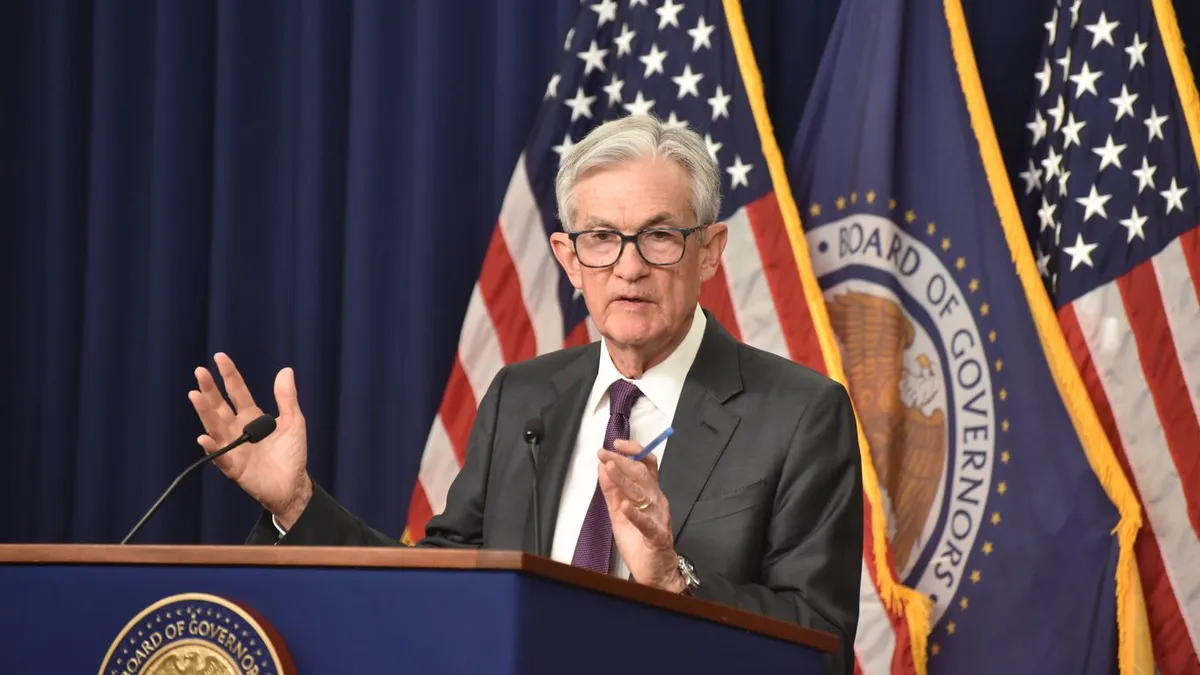
The Federal Reserve has decided to keep interest rates unchanged for the fourth consecutive meeting, signaling a cautious outlook for the economy. The central bank’s leaders expect weaker growth and higher inflation in 2023 than previously anticipated. Despite these challenges, they continue to forecast two potential rate cuts later this year.
This decision is significant as the Federal Reserve has resisted pressure from President Trump for immediate rate cuts. The central bank believes that a volatile policy environment could lead to both escalating prices and a weakened job market in the near future. The Fed's stance reflects their commitment to maintaining economic stability while navigating complex market conditions.
The Federal Open Market Committee (FOMC) unanimously voted to keep the interest rate target steady at a range of 4.25% to 4.5%, a level that has remained unchanged since December. In their latest projections, officials at the Fed continue to anticipate reducing the policy rate to 3.9% by the end of the year, aligning with their March predictions. However, the updated consensus suggests only one rate cut in 2026, as opposed to the two cuts previously indicated.
The latest projections from the Fed indicate a potential stagflationary economic state, characterized by rising inflation alongside slower economic growth. The median Fed official now predicts a 3% inflation rate for this year, an increase from the 2.7% forecast made in March. Additionally, the unemployment rate is expected to rise to 4.5% by year-end, up from 4.4%, while the median GDP growth forecast has been revised down to 1.4% from 1.7%.
It’s important to note that the March projections were established before President Trump’s Liberation Day reciprocal tariffs, which had a significant impact on the markets and raised recession concerns. Although tensions have eased with the trade war, uncertainty among businesses remains high, particularly regarding potential supply chain disruptions. The Fed is taking a wait-and-see approach, assessing whether inflation rises or labor market conditions worsen will pose a greater economic threat.
Fed Chair Jerome Powell emphasized the importance of the current labor market and moderate economic growth, stating, “As long as we're seeing the kind of labor market that we have, and reasonably decent growth and inflation moving down, we feel it’s appropriate to maintain our current position.” He highlighted the need for further insights over the summer regarding tariffs and their economic impact, indicating that the Fed's response will depend on the actual effects observed.
In light of recent favorable inflation reports, the Trump administration has criticized the Fed, accusing them of being overly cautious in their rate-cutting approach. Trump remarked on Powell’s reluctance to lower rates, stating, “We have a man who just refuses to lower the Fed rate. He’s not a smart person.” In response to these criticisms, Powell maintained that the FOMC's primary goal is to ensure a robust American economy with a strong labor market and price stability.
Overall, the Fed’s decision to hold interest rates steady reflects a complex economic landscape, balancing the risks of inflation against the need for sustainable growth.